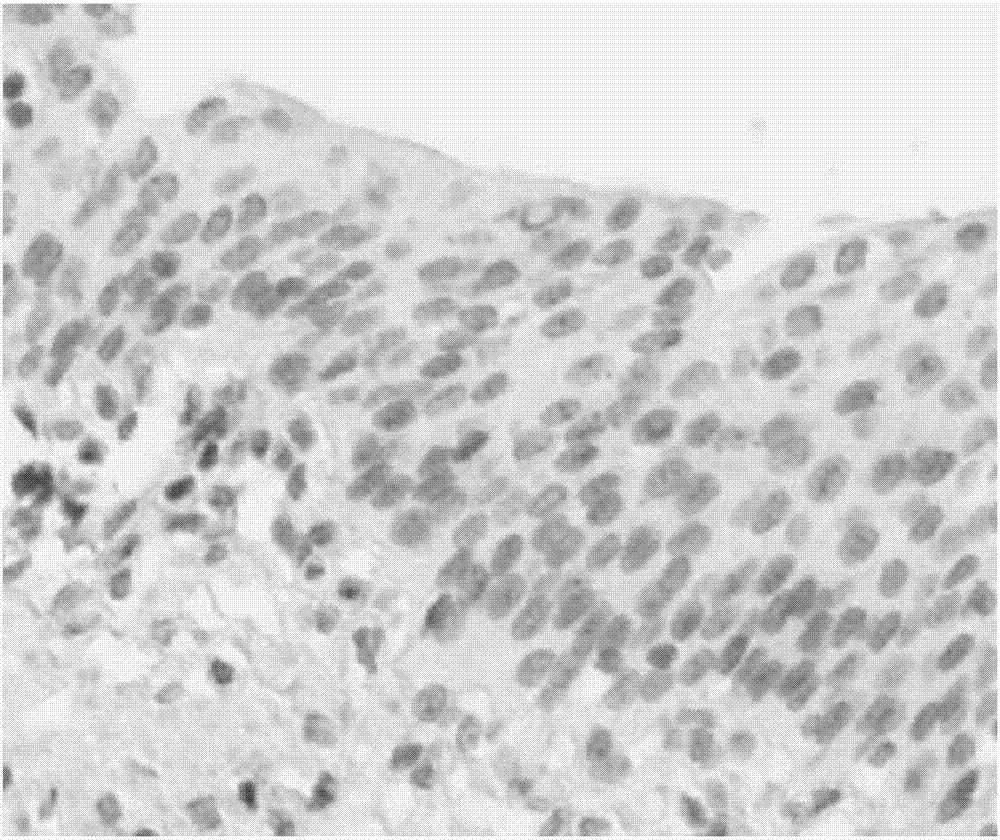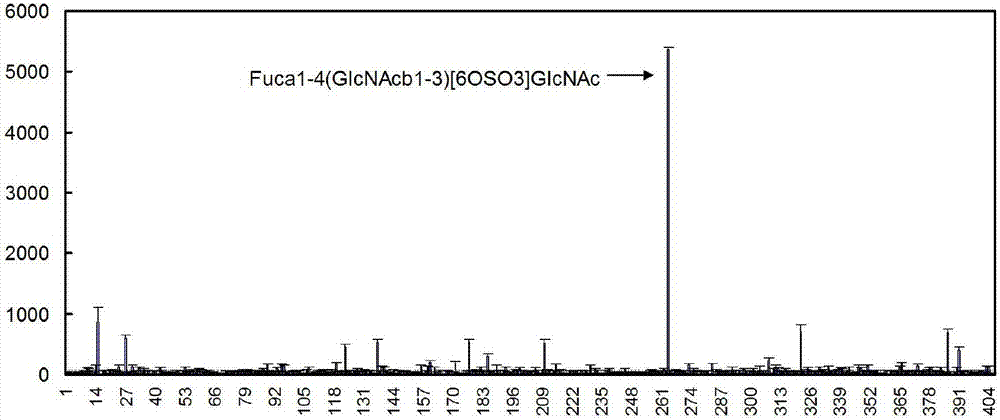Human urinary bladder carcinoma marker AG-CD71 and antibody ABC71 and application thereof
An AG-CD71, bladder cancer technology, applied in the field of tumor immunology, can solve the problems of high cost of urethral cystoscopy, bleeding, inconvenient operation, etc.
- Summary
- Abstract
- Description
- Claims
- Application Information
AI Technical Summary
Problems solved by technology
Method used
Image
Examples
Embodiment 1
[0030] Preparation and purification of ABC71 monoclonal antibody:
[0031] (1) Preparation of hybridoma cells
[0032] 1) Animal immunization and cell culture: Homogenize human bladder cancer tissue to extract total protein, immunize Balb / C mice (purchased from Beijing Weitong Lihua Experimental Animal Technology Co., Ltd.), and use 50ug of total protein per mouse. Dose for intraperitoneal immunization. Mice were re-immunized every two weeks. After the titer of the mouse serum reaches the requirement, the immunization is boosted again. After 3 days, the spleen of the mouse is taken to prepare a spleen cell suspension for cell fusion. Mouse myeloma cells Sp2 / 0 (ATCC CRL-1772) were revived and selected with 8-AG (8-azaguanine) to maintain the sensitivity of the cells to HAT.
[0033] 2) Cell fusion: Fusion the splenocyte suspension prepared in step 1) with myeloma cells. For specific methods, refer to "Guidelines for Experimental Immunology" ((USA) J.E. Science Root (USA) D.H...
Embodiment 2
[0041] Identification of ABC71 monoclonal antibodies:
[0042] Using the ABC71 monoclonal antibody prepared in Example 1 to carry out immunohistochemistry to human bladder cancer tissue and human normal bladder tissue section, the results are as follows figure 1 , 2 shown. The results showed that the human bladder cancer tissue showed positive reaction after ABC71 monoclonal antibody immunohistochemical staining (such as figure 1 shown), while normal human bladder tissue showed a negative reaction after ABC71 monoclonal antibody immunohistochemical staining (such as figure 2 shown).
[0043] Using the ABC71 monoclonal antibody prepared in Example 1, human bladder cancer tissue and human normal bladder tissue were detected by immunohistochemistry, and the results are shown in Table 1. The results showed that the ABC71 antibody had a strong positive reaction with human bladder cancer tissue, but had no cross-reaction with normal human bladder tissue.
[0044] Table 1. Immu...
Embodiment 3
[0047] Preparation of AG-CD71 antigen:
[0048] 1) Total protein extraction: Grind 100mg of human bladder cancer tissue into a homogenate, add 2ml of three decontamination lysate, lyse at 4°C for 10 minutes, centrifuge at 12000rpm for 20 minutes, and take the supernatant, which is the total protein of human bladder cancer tissue.
[0049] 2) Immunoprecipitation: Add 50ug of ABC71 monoclonal antibody and incubate at 4°C for 2h.
[0050] 3) Antigen identification: add 50ul Protein G beads and incubate at 4°C for 2h. The beads were washed with PBS, and then the beads were eluted with 0.2 mol / L glycine-HCl solution (pH2.8) for mass spectrometry analysis. The mass spectrometry results are shown in Table 2. The results of mass spectrometry showed that the antigen of ABC71 was the transferrin receptor TFRC. After analyzing the sugar chip data of ABC71 monoclonal antibody (such as image 3 (shown) found that the antigenic epitope recognized by the ABC71 monoclonal antibody is the ...
PUM
 Login to View More
Login to View More Abstract
Description
Claims
Application Information
 Login to View More
Login to View More - R&D
- Intellectual Property
- Life Sciences
- Materials
- Tech Scout
- Unparalleled Data Quality
- Higher Quality Content
- 60% Fewer Hallucinations
Browse by: Latest US Patents, China's latest patents, Technical Efficacy Thesaurus, Application Domain, Technology Topic, Popular Technical Reports.
© 2025 PatSnap. All rights reserved.Legal|Privacy policy|Modern Slavery Act Transparency Statement|Sitemap|About US| Contact US: help@patsnap.com



